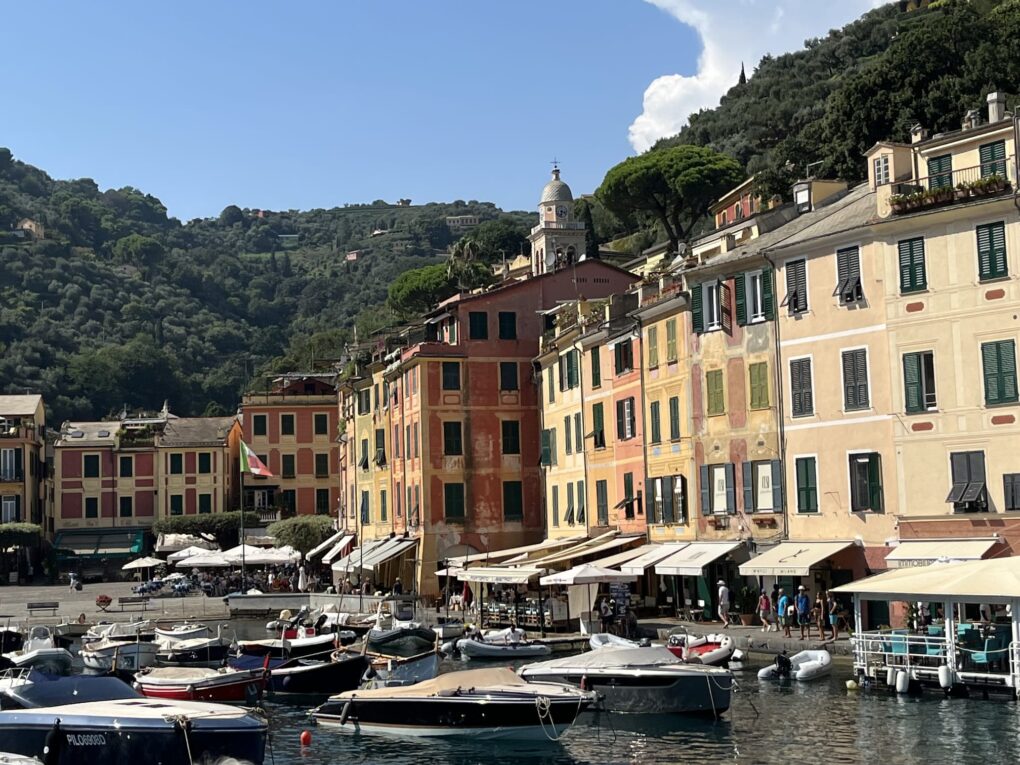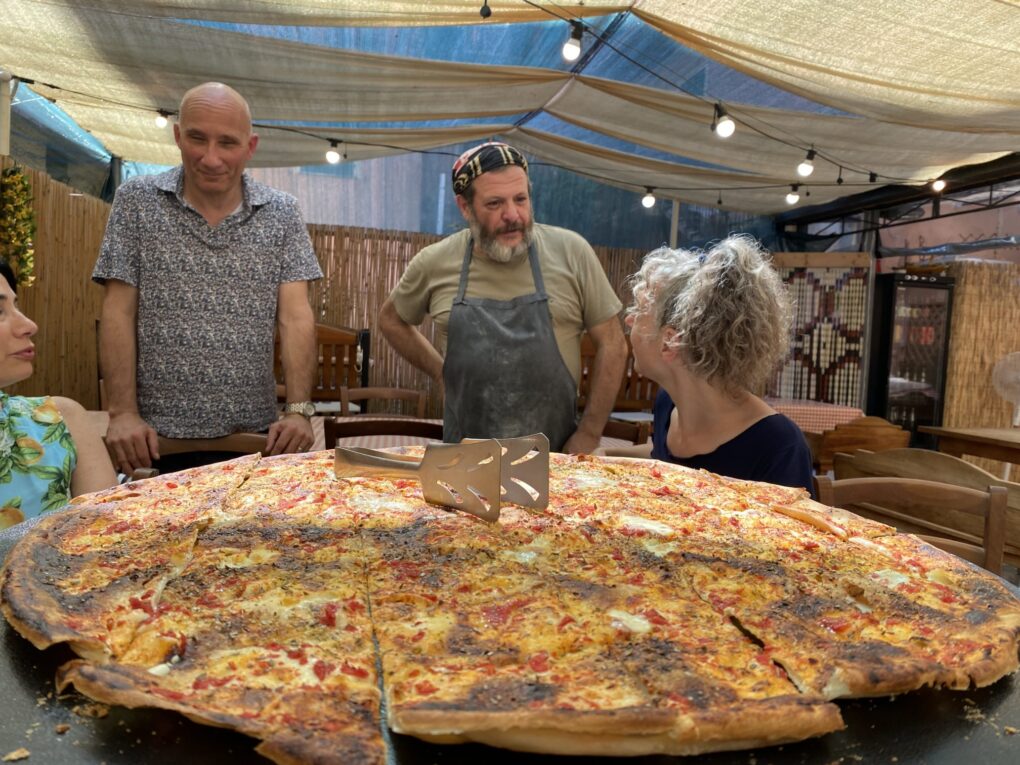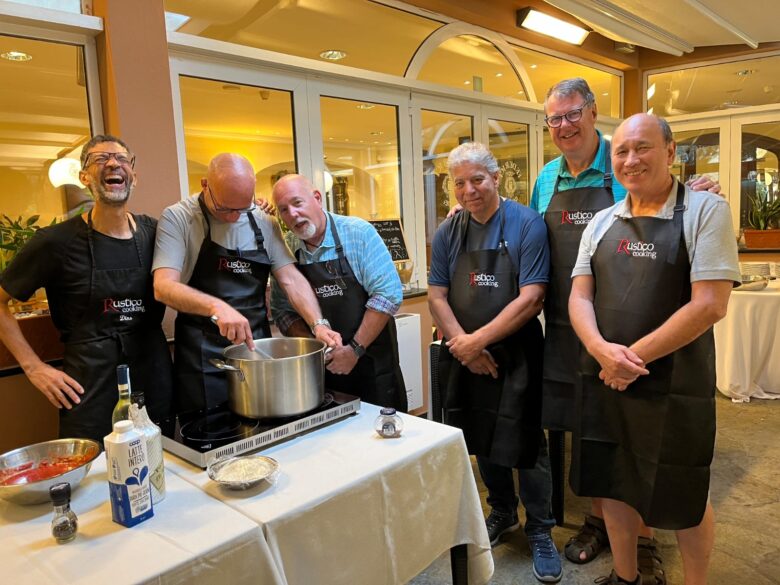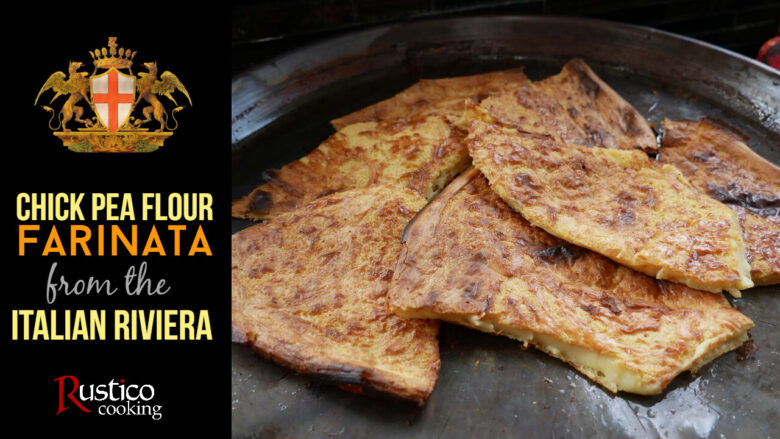|
News from Rustico Cooking ͏ ͏ ͏ ͏ ͏ ͏ ͏ ͏ ͏ ͏ ͏ ͏ ͏ ͏ ͏ ͏ ͏ ͏ ͏ ͏ ͏ ͏ ͏ ͏ ͏ ͏ ͏ ͏ ͏ ͏ ͏ ͏ ͏ ͏ ͏ ͏ ͏ ͏ ͏ ͏ ͏ ͏ ͏ ͏ ͏ ͏ ͏ ͏ ͏ ͏ ͏ ͏ ͏ ͏ ͏ ͏ ͏ ͏ ͏ ͏ ͏ ͏ ͏ ͏ ͏ ͏ ͏ ͏ ͏ ͏ ͏ ͏ ͏ ͏ ͏ ͏ ͏ ͏ ͏ ͏ ͏ ͏ ͏ ͏ ͏ ͏ ͏ ͏ ͏ ͏ ͏ ͏ ͏ ͏ ͏ ͏ ͏ ͏ ͏ ͏ ͏ ͏ ͏ ͏ ͏ ͏ ͏ ͏ ͏ ͏ ͏ ͏ ͏ ͏ ͏ ͏ ͏ ͏ ͏ ͏ ͏ ͏ ͏ ͏ ͏ ͏ ͏ ͏ ͏ ͏ ͏ ͏ ͏ ͏ ͏ ͏ ͏ ͏ ͏ ͏ ͏ ͏ ͏ ͏ ͏ ͏ ͏ ͏ ͏ ͏ ͏ ͏ ͏ ͏ ͏ ͏ ͏ ͏ ͏ ͏ ͏ ͏ ͏ ͏ ͏ ͏ ͏ ͏ ͏ ͏ ͏ ͏ ͏ ͏ ͏
|
| |
Above: Arriving in Portofino, one of northern Italy's most beautiful port towns, on Day One of our Tour.
Splendors of the Italian Riviera Tour May 2025
We’re often asked what the most beautiful region of Italy is. That’s really subjective, but if we really had to choose, we would say Liguria: after all, we left our home in the US to live here last year, and the beauty of the sea, mountains, and small towns remains just as bewitching to us today. It goes without saying that our culinary tour to Liguria touches on all the best things about this region from an insider’s perspective; after all, we live here, so we have the inside scoop… Not just the locations we visit, but the artisans we’ll introduce you to, the dishes you’ll taste, and the recipes you’ll learn to prepare. So what’s a typical day on our Liguria tour like?
We start off with a leisurely breakfast at a lovely four-star hotel in the quaint seaside town of Sestri Levante. Then we start cooking, and the laughter is as important as the learning. Lunch follows, with wine of course! Next a little down time before heading out to meet one of the passionate locals we’ve gotten to know, who will share their knowledge and their expertise with us: it might be gelato with Luca one day, olive oil the next day with Carlo, chocolate another day with Massimo. Some more down time, strolling in another seaside town, perhaps having an Aperol Spritz in a lively piazza, then a four-course dinner with wine punctuated by more laughter among new friends.
Sounds like a dream, but this will be the daily reality for participants on our Splendors of the Italian Riviera Tour from May 18 to 24, 2025: this is a unique opportunity to explore this beautiful region in northern Italy with people who live here full time as your guides, tasting the foods that have made Italy famous around the world, learning from local artisans and immersing yourself fully in the area's rich, varied culture.
Below: Chef Andrea in Rapallo shares tips on making his addictive cheese focaccia.
|
|
|
| |
- all breakfasts, all lunches, all dinners
- 6 nights stay at the hotel (upgrade to premium accommodations available)
- private room with en-suite bathroom
- daily hands-on cooking classes at the hotel
- wine with all lunches and dinners
- wine tasting at an award-winning winery in Cinque Terre
- olive oil tasting and visit of olive mill
- private gelato class with a master gelataio
- all organized group activities
- transportation by private bus to towns such as Camogli, Santa Margherita, Chiavari, and more
- transportation by ferry to Portofino
- all cooking class recipes
- Rustico Cooking apron
- One-year Rustico Cooking Video Membership (a value of $120)
We design and curate our tours personally: from the moment you contact us to inquire about our tours to the moment you leave our small group, you'll be taken care of by Micol and Dino, a husband-and-wife team devoted to creating memorable experiences for people who want to enjoy culinary travel off the beaten path.
Unlike other companies that want to catch a bigger slice of the travel market, we only offer tours to Italy because it's the country we know deeply: Micol was born in Milan, Dino is half Italian, and we live in Italy year round, so with us, you'll experience the insider's Italy.
Watch a brief video to see what we have in store for you on our Splendors of the Italian Riviera Tour and call us at 347 566 2212 (US phone on Italy time) or email micol@rusticocooking.com to book. We look forward to sharing our Italy with you!
Micol and Dino
Below: Laughing and bonding with new friends in our hands-on cooking classes.
|
|
|
| |
Client Testimonial: Laura & Mike G., Morris Plains, NJ
"I want to take a moment to express my deepest gratitude for the incredible week in Liguria. From the hands-on cooking classes where I learned amazing recipes and many new skills, to visits to so many different towns, each with its own unique charm and personality, every detail was perfect.
The classes and demonstrations by the local artisans from gelato and chocolate, to olive oil pastry and wine, was fascinating and delicious. The outstanding meals highlighting local cuisine and ingredients that amazing restaurants were delightful. I especially loved hearing the stories and rich history of the area that you both shared so generously with us.
Thank you for being so thoughtful and making sure we had the most memorable experience. You truly went above and beyond, and it was clear how much you care and how much love you put into everything."
|
|
|
|
| |
Farinata (Chickpea Flour Pancake from Liguria)
This thin chickpea flour pancake has been baked since time immemorial on hot stones, a primitive sort of bread that is hearty, nutritious, and delicious; dock workers in Genova made a simple meal of farinata until the 1950s, when the Italian economy improved, as it is quite filling and rich in protein. The Provencal bake a similar dish, called Socca, likely developed in the centuries Provence was inhabited by Ligurians. To be truly authentic, farinata should be baked in a very hot oven, quickly, and preferably in a heavy tin pan with a copper base, as copper transfers the heat to the batter faster and prevents it from drying out in the oven; a heated cast iron pan works as an alternative. Serves 2 as a main course, 4 as an appetizer (12-inch or 32-centimeter pan) - 175 grams Italian chickpea flour
- 525 grams room temperature water
- 4.5 grams sea salt, plus extra for serving
- 32 grams extra-virgin olive oil
- freshly ground black pepper
Place the chickpea flour in a large bowl. Slowly pour in the water, beating all the while with a whisk to avoid lumps. If needed, strain the batter through a fine sieve to eliminate lumps. Cover with plastic wrap and set aside 12 hours at cool room temperature. The batter should be as thin as heavy cream and will look slightly foamy. If you like, skim the foam off the top and discard.
When you are ready to cook the farinata, preheat the oven with a baking stone in it to 550 degrees for 1 hour. Whisk the salt into the chickpea batter. Set a large spoon next to the bowl of batter (you will need it later). Place a farinata pan or cast iron skillet (see introductory notes) on the stone in the preheated oven for 15 minutes. Immediately remove from the oven and pour in the olive oil. Swirl to coat the bottom of the pan with the olive oil. Whisk the batter vigorously to ensure that it is of the same viscosity throughout; the flour often settles on the bottom. Place the large spoon with the back side facing up (meaning convex rather than concave side facing up) in the middle over the oiled pan. Pour the batter so it falls over the back of the spoon into the hot oiled pan. The oil will form a barrier between the pan and the batter, rising up and around the batter thanks to the spoon. This is a key step that prevents the batter from sticking to the pan. Note that the amount of batter is sized to the diameter of the pan: The batter should be quite thin as it covers the pan, less than 1/4-inch (0.65 centimeters) thick. If there seems to be too much batter for the pan, hold some back and make a second pancake with it: if the pancake is too thick, it will bake up soggy throughout rather than crispy outside and creamy within. Carefully move the hot pan onto the baking stone in the preheated oven. Bake 15 minutes, or until set on the bottom and golden brown around the edges and starting to crack on top. If you like a thick, burnished crust on your farinata, place under a preheated broiler for 1 minute. Serve piping hot, seasoned with salt and pepper.
|
|
|
|




